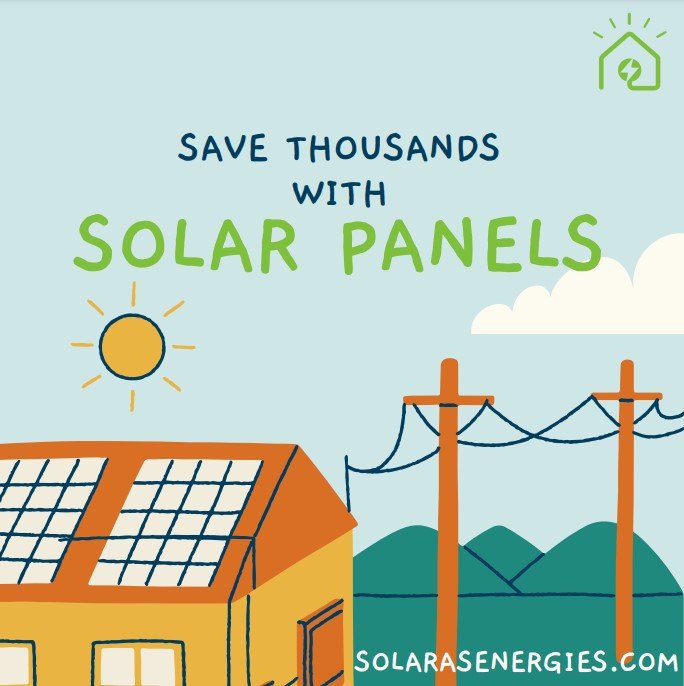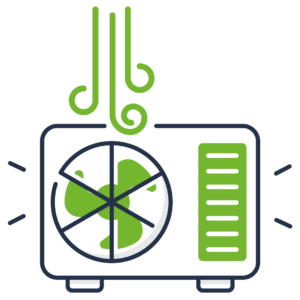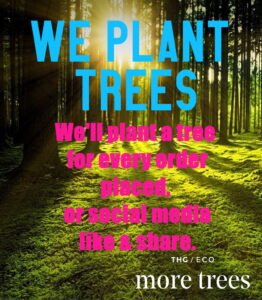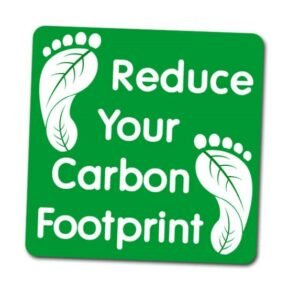A Guide To Renewable Energies
Index
- What are renewable energies?
- What’s the perfect renewable energy home?
- What is a renewable energy solution?
- What are renewable energy products?
- What are sustainable energies?
- What are green renewable energies?
- What is Solar energy?
- How does solar energy work?
- What is Wind energy
- How does wind energy work?
- What is Hydro energy?
- How does Hydro Energy Work?
- What is Tidal energy?
- How does Tidal Energy work?
- What is Geothermal energy?
- How does Geothermal Energy work?
- What is Biomass Energy
- How does Biomass Energy work?
- What isn’t a renewable energy source?
- What is the future of renewable energies?
- What is a carbon footprint?
- Tips to reducing your carbon footprint.
- Tips to reduce your energy costs.
- What’s a Sustainable Energy System?
A Guide To Renewable Energies
Solares Energies is dedicated to providing sustainable and innovative renewable energy system solutions to homes and businesses throughout Spain. Our team of experienced professionals is committed to creating a cleaner, more efficient future powered by renewable solutions and products.
With years of experience in the renewable energy industry, we’ve helped countless homeowners and business owners switch to green clean energy solutions that not only save them money on their energy bills but also make a positive impact on the environment. We different types of renewable energy solutions and services, including solar panels, electric vehicle car charging points, and more.
At Solare Energies, we understand that every customer is unique, and that’s why we take a personalised approach to every project we take on. Our team of experts will work with you to assess your clean energy needs and budget, and develop a custom solution that best suits your needs.
We’re committed to making the transition to renewable clean energy as easy and seamless as possible for our customers. From the initial consultation to the installation process and ongoing maintenance, we’re here to provide you with the support and guidance you need every step of the way. We have abundant renewable energy resources, so let’s use them to make a brighter future.
So, if you’re ready to make the switch to clean, sustainable clean energy, look no further than Solares Energies. Contact us today to schedule your consultation and take the first step towards a brighter, more sustainable future.
What’s the perfect renewable energy home?
 The perfect renewable energy home runs largely on Renewable Energy Products such as solar, wind, and or enhanced geothermal systems. Such a home should have sufficient insulation to reduce the amount of energy needed to keep it heated or cooled, along with double or triple-glazed windows to help retain heat in winter months.
The perfect renewable energy home runs largely on Renewable Energy Products such as solar, wind, and or enhanced geothermal systems. Such a home should have sufficient insulation to reduce the amount of energy needed to keep it heated or cooled, along with double or triple-glazed windows to help retain heat in winter months.
The perfect renewable energy home should be equipped with an array of energy-efficient appliances, as well as smart thermostats and/or occupancy sensors to regulate the temperature in each room based on occupancy levels. This will help ensure energy consumption is kept to a minimum when no one is using the space.
A solar panel system can be installed on the roof of the house for generating renewable energy from the sun’s rays. This electricity can then be used for heating water, using an electric Boiler and powering everyday devices like computers and TVs. Solar battery storage may also be added to store excess power generated by the solar panels for use overnight. – And don’t forget about a home electric car charging point. Use save solar energy, to charge your vehicle through the night, ready for the next day.
What are renewable energies?
Renewable energies are sources of energy that come from natural and replenishing resources. These renewable resources include solar power, wind, water, geothermal heat, and biomass, and they are constantly replenished, making them sustainable and eco-friendly alternatives to traditional fossil fuels. Renewable energies are also known as green energies, and they are becoming increasingly popular as people become more aware of the impact of non-renewable sources of clean energy on the environment. By using renewable energies, we can reduce our carbon footprint, decrease our dependence on fossil fuels, and create a cleaner, more sustainable future.
Renewable energies are forms of energy that come from renewable natural resources that can be replenished over time, unlike fossil fuels, which are finite resources that take millions of years to form.
Renewable energy sources include:
- Solar energy – energy obtained from the sun using photovoltaic cells and solar thermal systems.
- Wind energy – energy obtained from the wind using wind turbines.
- Hydropower – energy obtained from moving water, such as waterfalls and rivers, using hydroelectric dams.
- Tidal / Ocean Energy – energy obtained from the fast-moving underwater current and waves of the world’s oceans
- Geothermal energy – energy obtained from the Earth’s heat, using geothermal power plants.
- Biomass energy – energy obtained from organic matter, such as plant and animal waste, using biofuels and biogas.
These sources of energy are renewable because they can be replenished naturally and indefinitely, making them a sustainable alternative to non-renewable sources of energy like coal, oil, and natural gas.
What is a renewable energy solution?
 A renewable energy solution is a sustainable, eco-friendly way to produce energy using renewable sources of energy. Renewable energy solutions utilise natural resources that are constantly replenished, such as renewable energy industries such as solar energy, wind energy, water energy, geothermal energy, and biomass energy. These sources of renewable energy production are abundant and do not produce pollutants or greenhouse gases, making them a more sustainable and responsible alternative to traditional fossil fuels.
A renewable energy solution is a sustainable, eco-friendly way to produce energy using renewable sources of energy. Renewable energy solutions utilise natural resources that are constantly replenished, such as renewable energy industries such as solar energy, wind energy, water energy, geothermal energy, and biomass energy. These sources of renewable energy production are abundant and do not produce pollutants or greenhouse gases, making them a more sustainable and responsible alternative to traditional fossil fuels.
A Renewable energy solution can take many forms, including solar panels, wind turbines, hydroelectric power plants, geothermal heat pumps, and biomass energy systems. Each renewable energy solution is designed to harness the power of natural resources most efficiently and effectively as possible, and many renewable energy solutions can be customized to meet the specific needs of homes, businesses, and communities. By using renewable energy solutions, we can create a cleaner, more sustainable future, while reducing our dependence on non-renewable sources of clean energy that contribute to climate change, pollution, and other environmental problems.
What are renewable energy products?
Renewable energy products are physical items or systems that are designed to generate, store, or utilise energy from various types of renewable energy, such as solar, wind, hydro, geothermal, and biomass energy. These products are created to help individuals, households, and businesses transition to using renewable energy and reduce their reliance on non-renewable energy resources.
Some examples of renewable energy products include:
- Solar panels – Solar Panels and solar systems are used to generate electricity from the sun.
- Wind Power– Wind turbines and wind lean energy systems are used to generate electricity from wind power
- Hydroelectric systems are used to generate power from moving water, such as rivers or tidal flows.
- Geothermal heat pumps are used to heat and cool buildings using the natural heat from the Earth.
- Biofuel and biomass systems are used to generate power or fuel from organic matter such as wood, agricultural waste, or biogas.
- Energy storage systems are used to store excess renewable energy for later use, such as batteries or pumped hydro storage.
- Energy-efficient appliances and lighting are designed to use less energy and reduce overall energy consumption.
Renewable energy products are an important component of the transition to a cleaner and more sustainable clean energy system. They help to reduce greenhouse gas emissions, improve energy security, and create new opportunities for job creation and economic growth in the renewable energy sector.
What are sustainable energies?

Sustainable energies refer to energy resources and technologies that can be sustained over the long term without harming the environment or depleting natural resources. These energies are also known as green or renewable energies and include solar, wind, hydro, geothermal, and biomass energies. These energy sources solar technologies are considered sustainable because they are replenishable and do not contribute to carbon emissions, pollution, or other environmental problems.
Sustainable energies are a critical component of global efforts to mitigate climate change, reduce dependence on non-renewable sources of energy, and ensure the long-term well-being of people and the planet. By adopting sustainable clean energy technologies and solutions, we can help address the growing environmental concerns and create a cleaner, healthier, and more sustainable future.
Sustainable energies also have the potential to create new opportunities for job creation, economic growth, and energy independence, while helping to improve public health and the quality of life for people around the world.
What are green renewable energies?
Green renewable energies, also known as sustainable or renewable energies, are energy sources that are derived from natural, replenishable resources such as sunlight, wind, water, geothermal heat, and biomass. These renewable energy resource sources are considered to be eco-friendly because they don’t emit
Green renewable energies play a crucial role in addressing the challenges of climate change and promoting sustainable development. Some examples of green renewable energies are:
- Solar energy: It is produced from the suns-rays that are converted into electricity using solar panels.
- Wind power: It is generated by using wind turbines that harness the power of wind and converts it into electricity.
- Hydroelectric energy: It is produced by using the force of moving water to generate power.
- Geothermal energy: It is produced from the heat generated by the earth’s core and is converted into electricity using geothermal pumps.
- Biomass energy: It is produced from organic materials such as wood waste, crops or industrial waste
These green renewable energy sources help to reduce our dependence on non-renewable energy sources and decrease our carbon footprint, making them an essential part of our energy mix and the transition to a more sustainable clean energy system. They offer a cleaner, more environmentally friendly alternative to traditional fossil fuels and help to mitigate the impacts of climate change.
What is Solar energy?
 Solar energy is the clean energy that is produced by the sun’s rays and converted into electricity using solar panels. The energy from the sun is captured by photovoltaic (PV) cells or concentrated solar power (CSP) systems that direct solar energy and convert it into usable electricity.
Solar energy is the clean energy that is produced by the sun’s rays and converted into electricity using solar panels. The energy from the sun is captured by photovoltaic (PV) cells or concentrated solar power (CSP) systems that direct solar energy and convert it into usable electricity.
Solar energy is a sustainable, renewable, and clean source of clean energy that is becoming increasingly popular around the world. It has many applications, including powering homes, businesses, and other industrial and commercial applications.
One of the biggest advantages of solar energy is that it is a renewable source of energy, which means that it can be replenished easily and does not contribute to the depletion of natural resources. Additionally, it does not produce greenhouse gases or other pollutants, which makes it a clean and eco-friendly option for energy production.
Solar energy systems can be designed to fit many different needs and budgets, from small residential systems to large commercial and industrial systems. Advances in solar panel technology have made solar energy systems more efficient and cost-effective in recent years, making them an increasingly attractive option for energy production.
How does solar energy work?
Solar energy works by capturing the sun’s radiation with solar PV panels and converting it into usable electricity. Here’s how it works:
- Solar PV panels are made up of photovoltaic (PV) cells that convert sunlight into direct current (DC) electricity.
- An inverter then converts the DC electricity into alternating current (AC) electricity, which is compatible with the electrical grid and can be used to power homes or businesses.
- The clean energy produced by the solar PV panels can be stored in a battery system, which allows for energy use at all times, including when the sun is not shining.
- Solar energy systems are connected to the electrical grid, allowing excess energy produced by the solar PV panels to be sold back to the grid.
Solar energy harnesses the power of the sun to produce a sustainable, clean energy supply that can be used to power homes, businesses, and other applications. With advances in solar panel technology and decreasing costs, solar energy is becoming increasingly popular around the world as a viable and eco-friendly alternative to traditional fossil fuels and uses solar power for generating renewable energy all year round. – If you’re interested in a Solar PV Panel System, contact us today!
What is Wind energy?
Wind energy is a type of renewable energy that is obtained from the wind. It is a clean and abundant source of energy that can be converted into electricity through the use of wind turbines. Wind turbines use large blades to capture the energy of the wind and convert it into rotational motion, which is used to generate power. This electricity can then be used to power homes, businesses, and other electrical devices.
Wind energy is a clean and sustainable source of clean energy that produces no greenhouse gas emissions or air pollution. It is also cost-effective in the long run, as it has minimal fuel costs and requires minimal maintenance. Wind power is a rapidly growing industry around the world, as advances in technology and increasing demand for renewable energy sources are driving down costs and increasing efficiency.
Wind energy plays an important role in mitigating climate change, reducing greenhouse gas emissions, and promoting sustainable development.
How does wind energy work?
Wind energy works by using the power of the wind to turn a turbine and generate power. Here’s how it works:
- Wind turbines are usually located in open, windy areas, such as on top of hills or offshore.
- As the wind blows, it causes the blades of the turbine to spin, which turns a rotor in the nacelle of the turbine.
- The rotor is connected to a generator, which converts the mechanical energy from the turbine into electrical energy.
- The electrical energy produced by the generator is collected and sent to a transformer, which increases the voltage of the electricity and transfers it to the electrical grid or storage.
- The electricity generated by wind can be used to power homes, businesses, and even entire communities.
Wind energy is a clean, sustainable, and renewable source of energy that has many applications. It is a rapidly growing technology around the world with many countries focusing on increasing their wind energy capacity to decrease their carbon footprint and promote sustainable clean energy development and production.
While wind energy is a clean and sustainable source of clean energy, the intermittency of wind power can make it challenging to integrate into the power grid. To address this challenge, wind energy is often combined with other renewable energy sources, such as solar energy, and energy storage technologies, such as batteries or pumped hydro storage, to ensure a reliable and consistent supply of renewable electricity throughout.
What is Hydro energy?
Hydro energy, also known as marine energy or hydropower, is a renewable energy source that comes from the kinetic energy of flowing water. This energy can be harnessed and converted into electricity using hydroelectric systems.
Hydro energy has been used for centuries to power mills and other machinery, but it was not until the late 19th century that hydro energy began to be used on a larger scale for electricity generation.
Hydroelectric systems are typically composed of a dam or other barrier across a river, which creates a reservoir or smaller lake. Water is then released from the reservoir through a turbine, which spins and generates electricity.
Hydro energy is a sustainable and renewable source of energy that produces zero emissions, making it a clean and eco-friendly option for clean energy production. It is also a reliable and predictable source of energy supply, as it is not affected by weather conditions like solar or wind energy.
Some of the benefits of hydro energy include low operating costs, long lifespan, and flexibility in terms of energy storage and management. However, the construction of hydroelectric systems can have significant environmental impacts on local ecosystems and communities, which must be taken into account when planning for hydroelectric projects.
How does Hydro Energy Work?
Hydro energy, also called hydropower, works by converting the kinetic energy of flowing water into electricity. Here’s how it works:
- A dam or other barrier is built across a river to create a reservoir of water.
- When water is released from the reservoir, it flows through a tunnel or a pipe and into a turbine, which is located in a power station.
- As the water flows through the turbine, it causes the blades to spin. The mechanical energy from the turbine is then used to drive a generator.
- The generator converts this mechanical energy into electricity, which can then be delivered to homes and businesses via the power grid.
- After passing through the turbine, the water is discharged back into the river.
Hydro energy is a reliable and sustainable source of energy that can provide electricity to millions of homes and businesses. It produces no greenhouse gases or other harmful emissions, and its operating costs are low compared to other sources of energy.
Hydro energy has its limitations, and its use depends on the availability and fluctuations of water resources. Also, the construction of dams and other hydroelectric systems can have an environmental impact and social consequences that need to be carefully addressed.
What is Tidal Energy?
Tidal energy is a type of renewable energy that is produced by harnessing the kinetic energy of ocean tides to create electricity. Like other forms of renewable energy, tidal energy is clean and sustainable, and it can help to reduce greenhouse gas emissions and lower our carbon footprint.
Tidal energy is generated using turbines that are placed in the path of tidal currents. As the tides ebb and flow, they cause the turbines to turn, which generates electricity. Tidal energy technologies can be either tidal range systems or tidal stream systems.
Tidal range systems use the rise and fall of the tides to generate power by letting the water into reservoirs during high tide and releasing it back through turbines to generate power during low tide. The height difference between high and low tide can reach about 12 meters in some areas.
Tidal stream ocean energy systems can, on the other hand, generate power by using the currents of the tides to turn the blades of underwater turbines. Tidal stream systems are similar to wind turbines in operation and design, but they are placed underwater to harness ocean currents.
Tidal energy has the potential to be a major source of clean and renewable power in coastal regions around the world. It does not produce any greenhouse gas emissions or other pollutants, and because tides can be predicted years in advance, tidal energy can be considered reliable and predictable.
How does Tidal Energy work?
Tidal energy is a form of renewable energy that harnesses the tidal power out of the tides to generate power. Tidal energy is produced by the rise and fall of ocean tides caused by the gravitational pull of the moon and the sun. Tidal energy is a type of hydropower, but instead of using the flow of water in a river or stream, it uses the rise and fall of the tides.
Tidal energy can be harnessed using two main types of renewable energy ocean technology:
- Tidal barrage: A tidal barrage is a dam-like structure built across a tidal estuary or bay. As the tide flows into the estuary or bay, it is captured behind the barrage. When the tide goes out, the water behind the barrage is released through turbines, which generate power.
- Tidal stream: A tidal stream turbine is similar in design to a wind turbine, but it operates underwater. The turbines are placed on the ocean floor or suspended in the water, and they are turned by the flow of the tide.
Tidal energy is a clean and renewable source of energy that produces no greenhouse gas emissions or air pollution. Tidal energy is predictable and reliable, as the tides can be accurately predicted many years in advance. However, tidal energy has some challenges, including the high cost of building and maintaining tidal energy systems, the potential environmental impacts on marine ecosystems, and the need for suitable locations with strong tidal currents.
What is Geothermal energy?
Geothermal energy is a type of renewable energy that is generated from the natural heat of the Earth. Using geothermal energy involves drilling deep into the ground to access heated rocks and fluids which can then be used to generate electricity or provide heating and cooling for buildings.
Geothermal energy has been used for hundreds of years in some countries such as Iceland, where it is estimated that over 90% of all homes are heated by geothermal energy. It has become increasingly popular in recent years due to its affordability and clean nature – it does not produce any greenhouse gas emissions like fossil fuels do.
Geothermal power plants work by tapping into underground reservoirs of steam or hot water and using them to drive turbines which generate power. There are two main types of geothermal power plants: dry steam plants and binary cycle plants.
Dry steam plants use naturally occurring steam which is pumped through a turbine to generate power. Binary cycle plants, on the other hand, use hot water which is heated by the Earth’s heat and then converted into steam to drive a turbine generator.
Geothermal energy can be used not only to generate renewable electricity generation but also to provide direct heating solutions for both residential and commercial applications, as well as used for industrial processes such as food processing.
How does Geothermal Energy work?
Geothermal energy is a type of renewable energy that harnesses the natural heat of the earth to produce electricity or provide heating and cooling for buildings. Geothermal energy works by tapping into the natural heat of the earth’s core, which is constantly generating heat through the decay of radioactive materials.
Here are the basic steps involved in how geothermal energy works:
- A well is drilled into the earth’s crust to access the hot water and steam that is naturally occurring underground.
- The hot water and steam are brought to the surface through the well and passed through a heat exchanger, where the heat is transferred to a secondary fluid such as a refrigerant or a water-based solution.
- The secondary fluid is then circulated through a turbine, which is connected to a generator that produces electricity.
- The electricity generated by the geothermal power plant is sent to a transformer, which increases the voltage of the electricity to match the grid and sends it to the power grid for distribution.
- The cooled water or fluid is then returned to the underground reservoir to be reheated by the earth’s heat.
Geothermal energy is a clean and renewable source of energy that produces no greenhouse gas emissions or air pollution. Geothermal energy is a reliable source of energy, as it can be produced 24 hours a day, 365 days a year. However, the construction and maintenance of geothermal power plants can be costly, and the availability of geothermal resources is limited to certain areas where the earth’s heat is close enough to the surface to be economically viable.
What is Biomass Energy?
Biomass energy is a form of renewable energy that is generated from organic matter such as plants, trees and animals. This includes materials such as plant residues (e.g. crop straw), wood chips and pellets, animal manure, sewage sludge and food waste.
Biomass energy can be used to generate power, heat or combined heat and power (CHP). In the case of electricity generation, biomass is burned in specially designed boilers to create steam which drives a turbine generator. The heat generated in this process can also be used to provide hot water or space heating. CHP technology uses both the thermal energy from the burning biomass and the electricity from the turbine generator for the simultaneous production of heating and to generate electricity.
Biomass energy is considered to be one of the most effective forms of renewable energy available. It is carbon neutral, meaning it does not contribute to greenhouse gas emissions – unlike fossil fuels which are a major source of air pollution and climate change. Additionally, biomass can be grown in a sustainable manner using best practices such as agroforestry systems which combine trees with crops on the same land area.
How does Biomass Power work?
Biomass power is a renewable energy source that is produced from organic material, such as wood, agricultural waste and other plant-based sources. It works by burning biomass fuel to produce heat, which is then used to generate power or heat homes and businesses. Biomass heat energy can be used to produce steam power and biofuel as well.
The burning of biomass produces carbon dioxide, but it actually has a lower environmental impact than many other forms of energy since it reuses stored carbon dioxide rather than releasing it into the atmosphere like fossil fuels do. Biomass also replenishes itself naturally, so it’s a sustainable form of energy production.
By investing in biomass power solutions, you can help reduce your reliance on non-renewable sources of energy, while reducing your carbon footprint at the same time.
- Collection and Preparation: Biomass materials, such as wood, crops, and agricultural waste, are collected and prepared for use as fuel. This may involve drying, grinding, or other processing to make the biomass suitable for combustion.
- Combustion: The biomass is burned in a boiler or furnace to produce heat. This heat can be used directly to heat buildings or water, or it can be used to produce steam to power a turbine and generate power.
- Gasification: Biomass can also be converted into a gas by heating it in a low-oxygen environment. This gas, called syngas, can then be burned in a turbine to generate poer.
- Anaerobic Digestion: Organic waste can be broken down by microorganisms in the absence of oxygen to produce biogas, which can be used for heating or electricity generation.
- Biochemical Conversion: Some types of biomass can be converted into liquid fuels, such as ethanol or biodiesel, through a process of fermentation or other chemical reactions.
What isn’t a renewable energy source?
Non-renewable energy sources are those that cannot be replenished or replaced once they have been used. Examples of non-renewable energy sources include fossil fuels such as coal, oil, and natural gas; nuclear power; and certain types of biomass.
Fossil fuels: Coal, oil, and natural gas are all non-renewable energy sources that are formed over millions of years from the remains of plants and animals.
Nuclear energy: nuclear energy is generated by splitting the nucleus of an atom, releasing energy in the form of heat. While nuclear fuel is abundant, it is not renewable because it cannot be replenished once it is used up.
Biomass power: While biomass is a renewable resource, the burning of biomass for energy can be unsustainable if it is not managed properly. If too much biomass is harvested, it can lead to deforestation and soil erosion, which can have negative impacts on the environment.
Fossil-fuel-based hydrogen: Hydrogen can be produced from fossil fuels such as coal, oil, and natural gas. While hydrogen itself is a clean fuel that produces no greenhouse gas emissions when burned, the production of hydrogen from fossil fuels is not renewable.
Renewable energy sources such as solar, wind, hydro, geothermal, tidal, wave, and biomass power produced from sustainable sources are considered renewable because they can be replenished in a short period of time and do not contribute to the depletion of natural resources.
What is the future of renewable energies?
The future of the clean energy revolution and renewable energies is an exciting and promising one. With technological advancements and the increasing demand for sustainable energy solutions, the use of renewable energies is growing at a rapid rate. From wind turbines to solar panels, there is a range of different renewable energy technologies are now available which can be used to produce sustainable, clean energy.
In addition to the existing technologies, there is also ongoing research into other potential renewable energy sources such as hydrogen fuel cells and biomass-to-energy conversion. These technologies could revolutionise the way we produce electricity and significantly reduce our dependence on fossil fuels in the coming years.
The cost of renewable energy is also becoming increasingly competitive with traditional sources such as oil and gas, meaning that more households and businesses are choosing renewables over traditional power sources. This trend is likely to continue as technology continues to improve and become more affordable.
What is a carbon footprint?
A carbon footprint is the total amount of greenhouse gases (GHGs) released into the atmosphere as a result of an individual, organization, or event’s activities. These GHGs are made up of carbon dioxide (CO2), methane (CH4), nitrous oxide (N2O) and other gases which can contribute to climate change.
The most common way to measure a carbon footprint is by looking at the amount of CO2 released by an individual or organization over a certain period. This measurement can be used to understand how much energy is being consumed and the associated environmental impacts.
Individuals, organisations, and governments are increasingly looking for ways to reduce their carbon footprints to help mitigate climate change. This can include activities such as driving less, using renewable energy sources, reducing waste and improving energy efficiency. Reducing one’s own carbon dioxide emissions footprint requires effort and can have financial costs, but it also has significant benefits for both people and the environment in the long run.
Tips to reducing your carbon footprint.
Here are some tips for reducing your carbon footprint:
- Cut down on air travel and opt for low-carbon modes of transport, such as public transportation, cycling or walking instead.
- Reduce your consumption of animal products and switch to a more plant-based diet.
- Install energy-efficient appliances in the home, such as LED lights and energy star-rated fridges and washing machines.
- Buy second-hand goods whenever possible or look into renting items instead of buying them new.
- Unplug electrical devices when not in use, such as TVs, computers, phones chargers etc., to reduce electricity consumption.
- Plant trees in your yard to absorb carbon dioxide from the atmosphere and help reduce global warming temperatures.
What’s a Sustainable Energy System?
A sustainable energy system uses renewable, clean energy sources and technologies to create a reliable, efficient power supply. This type of system aims to provide electricity and other forms of energy at a lower cost while reducing environmental impacts. Sustainable energy systems can be divided into two main categories: those based on traditional renewable energies such as solar, wind, geothermal or hydropower; and those based on newer technologies such as hydrogen fuel cells or advanced battery storage solutions
The benefits of sustainable energy systems include reduced emissions of pollutants and greenhouse gases, lower operating costs, increased security of energy supplies, improved reliability of power generation and increased economic development opportunities. In addition, sustainable energy systems can help reduce dependence on fossil fuels and increase our ability to use more renewable sources of energy.
Contact | Solares Energies
Solares Energies is the ideal company for anyone looking to purchase renewable energy solutions. Our comprehensive range of products can meet all your needs, with options such as solar panels, wind turbines and geothermal systems available. We also offer a variety of financing options to make purchasing our products more affordable.
Our experienced team of engineers are experts in renewable energies, products and solutions, and will provide you with friendly advice and detailed information on the best solution for your home or business. We have years of experience in the industry and have installed hundreds of successful projects. Our commitment to customer service means that you can be confident that we will take care of all your needs from initial consultation through to installation and post-installation maintenance.
So if you’re looking for an experienced, reliable company for your renewable energy needs, look no further than Solaresenergies.com!



 Solar Panel Products & Articles
Solar Panel Products & Articles Other Products & Services
Other Products & Services



